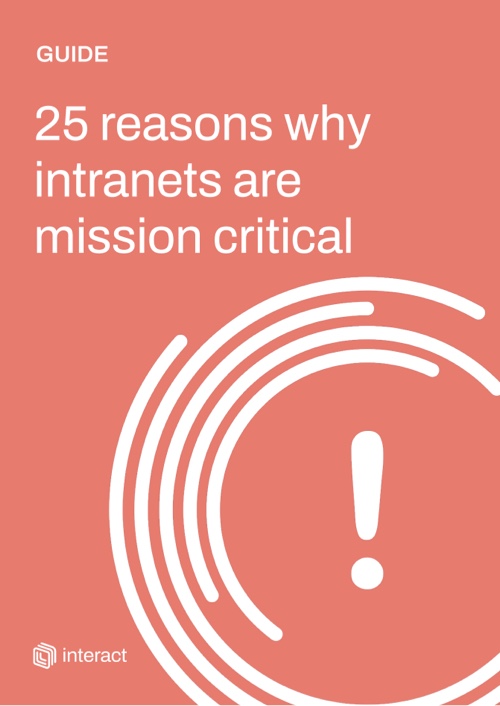9 tips to ramp up your employee engagement

“Disengaged employees cost organizations around $450-550 billion each year”
“85% of employees are not engaged in the workplace”
“81% of employees could leave their job today”
With these recent stats bandied about, is there any wonder why organizations are becoming more and more focused on employee engagement? This is the keystone to a successful workplace – with an engaged staff you have productivity, satisfaction, commitment, and motivation. And with this comes trust, fairness, and inclusiveness at the forefront of the business. Engaged staff are fulfilled, happy, and driven – with a clear understanding of their part in the organizational bigger picture.
However, in most businesses, this is not reality. Employee turnover is high, workplace satisfaction is low, and departments overspend to paper the cracks. The truth is, disengaged employees can be the death knell for a business. While every employee has the odd ‘off’ day, these don’t really affect teams. However, being disengaged is more long term, and like all negative behaviors, it can carry some influence on colleagues. Resentment, absence, and a decline in productivity are some of the tell-tale signs of a disengaged employee.
23 ways your workplace can use a mission-critical intranet to achieve its objectives
To fix the most fundamental of needs in business, employee engagement needs to be achieved with a strategic approach. It also needs to be ongoing, a culture change that begins in the senior levels of the business and spreads out to every employee. These tips should help you identify any gaps in your employee engagement plan.
Tip 1: Managers need to get over the fear of speaking directly

“69% of managers say that there is something about their roles as a leader that makes them uncomfortable communicating with their employees”
According to a Harris poll, managers are afraid to communicate with their teams. If there is a blockage there, it can have an extraordinarily negative impact on employee engagement. Issues aren’t addressed, problems deteriorate, and employee happiness spirals. Instead, managers need to face challenges head-on. Even when the waters are relatively smooth, managers should check in on staff, catch up with any news, and keep a close eye on their team. Emotional intelligence is a crucial skill for leaders – and having this should equip them for any conversation, whether they are easy or difficult.
Tip 2: Make communication a two-way street

When you have managers unafraid to speak directly to their team, the team will also feel empowered to talk candidly to them. This is one of the critical components of employee engagement – when you have a business where communication is open, welcome, and listened to, your staff feel more confident to speak up as and when they need to. Promoting a culture of communication feeds down to how colleagues speak to one another. An organization thrives off open channels for discussion, so this has a profound value to the way knowledge is shared, ideas are exchanged, and people collaborate.
Tip 3: Focus on the growth and development of your staff

“69% of employees believe that they are overqualified.” Staff can quickly become disengaged when they’ve been doing the same thing for a long time. When employers don’t recognize their staff’s worth, it’s only a matter of time before those employees are disengaged, bored, and dejected. And this doesn’t even have to involve promotions and pay raises. Most staff just need to feel they’re being invested in and that they’re developing their skill set to become an employee who can add more value to the organization. This is particularly pertinent to the Millennial demographic. Coaching and mentoring within an organization strengthen working relationships and allow the employee to work out the direction they want to go in. With this approach, you improve your own and your group’s performance and productivity. After all, no one wants to remain stagnant.
Tip 4: Let your people help with the creation of goals

When goals are set, how often are your people involved in their creation? In most places, the organization’s targets are fed down to the top. The majority of the workforce is left in the dark about why and how these objectives have been decided. If you want to engage your staff, it is an excellent idea to let them in on company information that is traditionally kept private. Looking at the facts and figures and explaining where the company needs to be in the next twelve months, will allow employees to understand the structure of their targets and give them even more impetus to reach them. When every member of staff knows what they’re aiming for and why, there is a deeper understanding and appreciation for everyone’s roles.
Tip 5: Look at your leadership

Poor employee engagement can be traced back to poor leadership. Gallup’s State of the American Workplace shows some revealing insights into how leadership is perceived amongst the workforce:
22% of employees strongly believe the leadership has a strong idea direction.
15% strongly agree that their lead makes them enthusiastic about the future.
13% strongly agree that their leadership communicated expertly.
23 ways your workplace can use a mission-critical intranet to achieve its objectives
It’s clear how poor leadership communication can impact the way employees feel about their jobs. For this to change, senior-level leaders must review the way their leaders conduct themselves with teams. Retraining, coaching, and feedback should be implemented, and pulse surveys should be sent out regularly to allow employees to anonymously feedback their thoughts and opinions on important topics like leadership.
Tip 6: Take time out to recognize

How do you recognize and celebrate the achievements of your people? Highlighting great work is a sure-fire way to make your employees feel appreciated, and as a result, boost engagement. Studies show that 69% of employees say they would work harder if they felt their efforts were better appreciated.
While ad hoc congratulations and shoutouts are great, a more established recognition program is a very effective way to promote appreciation. Creating an awards system alongside it is a very popular feature of a company intranet. This way, your organization can look after a peer-to-peer or manager-to-employee rewards program and give recognition to a job well done using a virtual currency that can be exchanged for tangible rewards later on down the line. This can be very effective in boosting engagement and morale.
Tip 7: Effective preboarding

So many businesses are missing out on the multitude of benefits that a proper preboarding experience brings. While onboarding is becoming a more common feature of employee lifecycle management, preboarding remains neglected. Despite this, for those companies who do employ it, it is their secret weapon in recruitment, training, and productivity. But more than anything, it has been seen to have a significant effect on employee engagement, with long-term effects on longevity, happiness, and satisfaction.
Preboarding sets the tone for a recruit before they’ve officially joined the organization. By welcoming the beginner in with all the information, warmth, and introductions to the business that they need, you build excitement, allay fears, and prepare the employee for their new role. This shows to the worker that the organization they are joining is focused on supporting and investing in their people right from the very beginning.
Tip 8: Provide a meaningful experience

Aside from a monthly salary, what is the ‘why’ that your employees are working towards? It has been noted that millennials in particular, place a lot of focus on contributing to social good. Inspiring your workforce with acts of altruism for the wider community can boost employee engagement massively. There are several ways you can do this – creating opportunities for your people to volunteer, arranging fundraisers or events.
Some of your employees have close links to specific charities. Speak to your people, to find out which non-profits they are personally linked to and see what you can do to support them. Broadcasting your fundraising events on your intranet homepage is an effective way of reaching everyone in your organization.
Tip 9: Take a 21st-century approach to work-life balance

Most people are spinning a lot of plates both at work and at home. Whatever their domestic situation, it’s essential as employers that you respect the need to focus on life outside of the office walls, just as much as they do inside of them.
The ‘always-on’ culture of the late 20th century is fading somewhat, but there is still an element of it present in modern-day offices. Respect is given to those who stay late, work into the evenings, and have no clear boundaries between work and home. However, as an employer, it’s important to protect employees from this and allow them to recharge properly at home, spending time with family and loved ones.
The upside of this is you reduce the risk of burn-out, you prevent work overload from breeding resentment, and you enable your people to be the best versions of themselves so they can fulfill their roles and responsibilities.
Employee engagement is a long-term plan

Disengagement is bad for business. As Andrew Sherman says in his book The Crisis of Disengagement, “…it is a disease affecting the central nervous system of our economy”.
It’s a phrase often overused, but the simple truth is that employee engagement is vital to the longevity of a business. Whether it’s inadequate challenges, morale, pay, lack of recognition, or a sense of purpose, it can happen quite quickly and sometimes be impossible to reverse.
A lack of trust, poor working relationships, conflict, increased bullying, low productivity, and its influence on the rest of the team are some of its many impacts. There are some ways to combat this, but the best plan is to prevent it from happening in the first place. So how do we get engagement back on track, and close the gap between those who are feeling disdain in the workplace? To stay engaging, you need to continually monitor the situation with the help of analytics, pulse surveys, and the implementation of winning employee engagement ideas.
Making sure your people are emotionally invested in their work, care about what they do, and work as a team will pay dividends. When you have established employee engagement, you have staff that goes above and beyond their duty for the greater good. Quite simply, it pays – and could be the difference between your business’s success and its failure.

